Hotel Finder Capstone Project Document
Introduction
Nowadays our generation is living with technology, technology is now part of our daily life especially in our work and it will not stop anytime soon. Businesses tend to adopt these trends to maintain their competitiveness. Hotel industries, in particular, to provide their existing and potential clients better service and embracing technology is the key to their edge. This is supported by Myat, Sharkasi, & Rajasekera (2019) which stated that most websites lack an online booking capability, and as a result, and due to a global trend, online booking through third-party intermediaries has become the dominant option for hotel booking arrangements in Myanmar.
Hotel companies here in Bacolod City particularly are now adopting an automated and online reservation system which is a big help to fasten the process of advertising and answering the consumer’s inquiries and admissions. However, there are still hotel companies here in Bacolod City whom practices manual way of recording of reservations and information of those who have sent them admissions and inquiries information and forms of reservation where place in a drawer that cause’s process problem form and misplacing of forms to difficulty of updating, saving, searching, and sometimes even viewing the records to the problem of contacting the customer who have reserved already. Moreover, it consumes a lot of time, power, energy, and effort of the person in charge.
Thus, the proponents propose a Hotel Finder that will help the hotel company particularly, the marketing officer, managed the incoming inquiries and reservation. Since it is Online it can be accessed anywhere with internet connection, Customer who we’re far can visit the website and inquire for reservation. It doesn’t only lessen the process of time consumed it also makes the work a lot efficient, easier and fast. Since the computerized system is very reliable and useful in security and some confidential records.
Background of the study
There are some hotels here in Bacolod who are using the manual way of booking reservation especially the small-time Hotels and lodge. The manual process of booking reservation gives a hard time to the employee to identify the needs of their client sometimes they encounter problems such as no show of cancellation, Therefore, the proponent believed that this system would help to optimize productivity and improved customer’s satisfaction. This system also provides a database for the records of the customer who book in their hotel. The system will be used by the employees and the manager. The proponents come up with this study by developing a new type of Hotel Finder in every hotel around Bacolod in accordance with the technology enhancement. The proposed system is to modernize the process of booking reservation. Keeping records, etc. the system performed high efficiency, security, and effectiveness.
Objective of the Study
This study aims to develop a Hotel Finder for Hotels located in Bacolod City, Negros Occidental.
Specifically, the study aims to:
Develop a Hotel Finder that can:
Allow hotels to have a portal for advertising their room rates;
Utilized by the hotel to manage hotel reservations and transactions; and
Let the system Provide reservation process to the clients through portal.
Evaluate the acceptability of the system using the standard instrument of ISO/IEC 25010:2011 System and Software Quality Requirements and Evaluation in terms of Functional Suitability, Performance Efficiency, Compatibility, Usability,
Reliability, Security, Maintainability, and Portability.
Conceptual Framework
The conceptual framework of this system shows and indicates the flow of the system and helps the users and all the readers understand how it will be processed or functioned. This study is intended to improve the existence of a manual way of booking reservation of the registered Hotels, Appartels and Condo in Bacolod City, in order to have the customer an electronic way of reserving hotels, appartel and condo.
Scope and Delimitation of the Study
This section enumerates the scope covered by the study and its delimitation.
Scope
The study covers the Hotel Finder in Bacolod City, it is a web-based system that focuses on finding hotels, Appartel and condo in Bacolod City. The Hotel manager will register their hotel in our system, this enables them to have their own account in our website wherein they are able to post their rooms, its price and available services. It will also display reviews and ratings made by customers who had already experienced the services of their hotel. Through this system, it will help the Hotel advertise their rooms and services and it will also help customers find their choice. Through this, the hotel can also identify what area of their service needs to be improved.
Delimitation
This system is no longer responsible for the billing process of the customer at the hotel; this study is limited for hotels in Bacolod area. The admin and the hotel managers who are authorized can post and update the records in the system. Only registered customer can write their reviews in the system.
Significance of the Study
The study is intended to various set of people who could benefit in the system. The result of this study will be beneficial to the following:
Hotel. This study will be helpful to the hotel to promote their business and gain more customers, it will also help them in the way that the transaction will be efficient and effective through online reservations and provides storage for customer’s information records.
Manager/Owner of the Hotel, Appartel and Condo. This system is a tool in serving and helping both the customer and its owner. Its main function focuses more on filtering hotels that suits to the customer needs, and building strong and competitive advantage in a competitive world in Business.
Customer. This system aims to provide a quality and updated information in filtering hotels in Bacolod City. Customers are also being heard through its feedback, comments and suggestion in every Hotel that they visited.
Future researcher. They can this study to widen and gives them an idea.
Proponents. This system will enable them to apply what they have studied and research.
Definition of Terms
Hotel. Conceptually a building where you pay to have room to sleep in, and where you can sometimes eat meals (Hope, 2015).
Operationally, Hotels manage to advertise their rooms and services through our system.
Online. Controlled by or connected to another computer or to another network (Hutton, 2014).
Operationally, indicates a state of connectivity.
Finder. Conceptually, Finder is a person who find something or someone (Collins, 2018).
In this study the term refers on finding hotel for the customer.
Automation. Conceptually, automatically controlled operation of an apparatus, process, or system by mechanical or electronic devices (Geertz, 2015).
Operationally, with the use of technology, it can help our system to improve more.
Database. Conceptually, this term refers to a collection of information that is organized so that it can easily be accessed, managed, and updated (McCabe, 2017).
Operationally, it organized data for convenient access, generally in a computer.
Review Of Related Literature
This chapter presents the relevant studies and systems which were the basis for the design and development of the system.
Local Studies
TripAdvisor
According to Hee “Andy” Lee, Rob Law & Jamie Marphy TripAdvisor is a popular website if you’re looking for restaurant and accommodation reviews However, you can also book your hotel room and flight through them Just choose where you want to go, the dates, number of guests, and rooms. You can then narrow it down by choosing your accommodation type, traveler, rating, hotel class, amenities, and hotel style.
TRAVELBOOK.PH
According to Travelbook.PH is an online ticketing platform that allows users to book hotels for travelers. Travelbook.ph was founded in 2010. Travelbook.PH’s headquarters is located in Metro Manila, Quezon, PH 1110. Travelbook.ph has an estimated 85 employees and an estimated annual revenue of 3.0M.
658 Apartelle Online Reservation Management System
Is not only a database for guest list but also an online reservation system, where potential guest can have online reservation which automatically be sent to database of the 658 Apartelle. Based on the proponent’s observation and interview, they have found Many problems such as time consuming logging of the guest names to the log book, difficulties in making reservation and difficulties in retrieving information on their previous guest because of the papers that are scattered everywhere and misplacing of the guestless records.
Foreign Related Studies
Agoda
Agoda is a popular booking site which is based in Singapore. Like any standard booking app, it allows you to choose the dates of your check-in and check-out then customize the filters according to star rating, guest rating, price, neighborhood, payment options, property type (resort, hotel, or guest house), rental home or apartment, and facilities. Apart from hotel rooms, you can also compare airfare tickets through Agoda. Getting a shuttle service between the airport and your hotel can be a pain but not with this app.
Trivago
is a metasearch hotel search site that quickly sifts through the metadata of hotel sit Trivago is a metasearch hotel search site that quickly sifts through the metadata of hotel sites and other travel booking portals to find you the best deal in a matter of seconds. Like Kayak and Google Flights, you do not book directly on Trivago but are transferred to the hotel website or the booking site (i.e. Expedia, Cancelon, etc.) to begin the reservation process. You find a hotel room and Trivago earns a small referral commission.
Expedia
Is one of the best-known booking apps in the world. Capable of booking both hotel rooms and flights, it’s a go-to app for seasoned travelers. You simply have to type in your destination, choose the number of guests and your check-in and check-out dates. Narrowing down your choices is easy because their filters aren’t extensive. When it comes to flights, choose either a round trip or a one-way flight. Next, choose which airport you’ll be coming from and where you want to land. Choose the dates, number of passengers, and travel class.
Related Systems
The table 1 shows the featured of the proposed system in the first column, whereas the following columns are the features of the related systems.
Synthesis
This system is based on local and foreign system study, that were made a basis in this study being developed. It also describes the features that are available and unavailable in this system.
All the related system presented, have same nature to the study, but were observe to have some problem when it comes to bookings and their security.
The system discussed are correlated to the proponents system, the Hotel Finder in Bacolod City, the proponents analyzed accurately and evaluate the related system based on its modules and its functions.
The related system has the proponents realized some functions and factors that would help the proposed system to be more advanced, accurate and effective for the users. Furthermore, the proponents acquire some features in the related studies and merged it to the system to be more beneficial to hotel companies.
METHODOLOGY
In this chapter, the proponents discussed and explain the phases of the System Development Life Cycle used for the development of this system. The proponents follow the standard System Development Life Cycle (SDLC), to define and present solutions to the problems identified in this study RAD model were used.
According to Kelsie Anderson (2019), RAD Model is agile software development methodology it emphasizes working software and user feedback over strict planning and requirements recording. It consists of four phases includes; Planning Requirements, User Design, Rapid Construction, Cutover.
Requirements Planning
During this initial stage, after we selected our team members. The Researchers assigned tasks and assignments to each other. After the researchers did their brainstorming about the title of the system, we did the interviews and surveys to every Hotel. Here, they also come up for some related studies of the system. The team members communicate to determine the goals and expectations for the project as well as current and potential issues that would need to be addressed during the build.
User Design
In this phase, we draft preliminary design which is relevant to the proposed system however; this design doesn’t include some important aspect of the system. Once the project is scoped out, we go right into development, building out the user design through various prototype iterations, the client (user) tests it, and then they come together to communicate on what worked and what didn’t.
Rapid Construction
For this phase our team, prepare for rapid construction, program and application development, coding, unit integration, and system testing. Programmer and researcher work together during this stage to make sure everything is working smoothly and that the end result satisfies the client’s expectations and objectives.
Cutover
This is the implementation phase where the finished product goes to launch. It includes data conversion, testing, and changeover to the new system, as well as user training. All final changes are made while the coders and clients continue to look for bugs in the system.
Operational Feasibility
The goal of the system study is to develop the following booking and services:
- To provide the customer the list of affordable hotel around Bacolod.
- An online booking and services that can be access in anywhere through an internet connection.
- To provide an effective and efficient service.
- To help the manager of the hotel monitor the number of customer.
- To enhance the data storage of every hotel.
Program Environment
Front End
The front end is the client part of the program that is responsible for the checking of syntax and collecting the input data from the customer. It is also responsible for processing the action to complete all requests that the user has made. To build the front end of the program, the proponents used the PHP as the main scripting language while HTML and the JavaScript for providing the user interface the system as for the design and to help keep information in the proper display format the proponents will use CSS codes. And for adding some Customer information the proponents used JQuery to simply put the function inside the Hotel Finder add, edit and delete. In the proposed system the programmer used this in showing the archive.
Back End
The back end is the “serve-side” scripting codes that can be located in the server. To build the back end of the program the proponents used the PHP as the scripting language and interpreter that is freely available and used primarily on Linux web servers. PHP can interpret and perform the operations called for in the PHP script every time that the web server calls. The proponents also used Apache and MYSQL.
Technical Feasibility
Hardware Specification
Table 2.0: System’s Development Hardware
| Name | Specification |
| Processor
RAM Hard Disk Network |
Pentium or latest
2gb 120gb Local Area Network |
Implementation
Table 2.1: System’s Development Hardware (Application for Customer)
| Name | Minimum | Specification | |
| Processor | Pentium | Celeron or latest
2gb or above 120gb or latest Internet |
|
| RAM 2gb
Hard Disk 120gb Network Internet |
|||
Software Specification
Development
Table 2.2: System’s Development System
| Name | Software | Version |
| Database
Operating System(OS) Programming Language/Software |
MySQL
Microsoft Windows HTML, CSS, JavaScript, Jquery, Sublime |
MySQLi
7 HTML5, Sublime Text ver.3 |
Implementation
Table 2.3: System’s Implementation Development
| Name | Minimum | Recommended | |
| Operating System(OS)
Web Browser |
Window 7
Google Chrome, Firefox |
Window 7 or latest
Google Chrome |
|
Architechural Diagram
Figure 3 shows the structural design of the system Hotel Finder for Hotels in Bacolod.
Feasibility Schedule
Contains the records of the amount of booking time the proponent spent time on the system.
Gantt Chart
The following tables show the Gantt chart of the task that have been done by the proponents with the booking time for the establishment and the entire system.
Table 4.0 Requirement Planning
In this table, you can see the Planning result of each member.
Table 4.1: Design Phase
In this table, you can see the Design result of each member.
Table 4.2: Prototyping Phase
In this table, you can see the Prototyping result.
Table 4.3: Testing Phase
In this table, you can see the Testing result.
Table 4.3: Testing Phase
In this table, you can see the Testing result.
Table 4.5: Software Development Phase
Cost Benefit Analysis
Cost Benefits Analysis or CBA is the estimation and total equivalent money value of the benefits and costs of the system in order to determine its worth. The Development Cost of the system shows on this table.
Development cost includes the details above, the cost relating the utility expenses and human power.
The table shows that the cost benefits analysis or the CBA, is the estimated cost and sum of the amount cost and benefits of the system, to determine whether the company can gain benefit from the system.
This table shows the Operational Cost of the researched system. The Operational Cost includes the maintenance cost and the expenses in using the researched system.
The table shows the overall total cost of development cost and operational cost of the system.
Benefits of the System (Annually) Amount/Value
Total benefits of the system to the Hotel Finder shows on this table.
This table shows the benefits of the researched system. The proponents have analyzed the presumed amounts or value of each item that would benefit the company.
Cost Benefits Analysis
This table shows a chart of the Cost Benefits Analysis. The Return of Investment comes out of 98%. The Payback Period was computed by taking the sum of the present value of the system benefit and subtracting it to the present value of the system, to get its net present value and get the sum of net present value the proponents subtracting it to the negative value of the system. And dividing the difference net present value. Payback period = Initial Investment/Cash Inflow. The ROI was computed by taking the sum of the total Present value of the system benefits, subtracting it to the total present value of system cost, dividing the difference total present value of the system cost. The equivalent of the quotient will be the ROI or Return of Investment. The formula that the proponents used can be seen on Table 5.0.
ERD Model
This figure shows the relationship of each entity. The data gathered into individual entities become the basis to record and entities.
Necessary attributes that simplify the data in the system
Data Flow Diagram
This Data flow diagram shows the process between the admin and the customer during their booking reservation.
Data Dictionary
Table 5.0: Data Dictionary of the System
Amenities_Facilities
| Column | Type | Description |
| Id
date_reg date_mod name desc createdby modifiedby |
int(11)
date date varchar(255) text int(11) int(11) |
Refer to the amenities facilities id
Refer to the amenities facilities date registration hotel Refer to the amenities facilities date model of the hotel. Refer to the amenities facilities name Refer to the amenities facilities description of the hotel Refer to the proponent who create the system Refer to the modified system |
Customer
| Column | Type | Description |
| Id
date_reg date_mod fname lname contact_no email_address username password status createdby modifiedby picture |
int(11)
date date varchar(100) varchar(100) varchar(100) varchar(100) varchar(100) varchar(100) int(11) int(11) int(11) varchar(250) |
Refer to the customers id
Refer to the customers date registration Refer to the customers date model. Refer to the customers first name Refer to the customers last name Refer to the customers contact number Refer to the customers email address Refer to the customers username Refer to the customers password Refer to the customers status Refer to the proponent who create the system Refer to the modified system Refer to the hotels picture
|
Customer_comments
| Column | Type | Description |
| Id
comments customer_id date_reg hotel_id |
int(11)
text int(11) timestamp int(11) |
Refer to the customers comments id
Refer to the customers comments Refer to the customers id Refer to the customers date registration Refer to the hotel id |
Customer_rating
| Column | Type | Description |
| Id
rating_id hotel_id rating customer_id |
int(11)
int(11) int(11) int(11) int(11) |
Refer to the Customers rating id
Refer to the rating id Refer to the hotel id Refer to the customers of how they rate Refer to the customers id |
Details
| Column | Type | Description |
| id
date_reg date_mod hotel_id link site_name website_id price room_type_id free_breakfast createdby modifiedby randomstring |
int(11)
date date int(11) text varchar(255) int(11) double int(11) int(11) int(11) int(11) varchar(100) |
Id no. of the hotel details
Refer to the date register Refer to the customers date model. Refer to the hotel id Refer to the website link Refer to the site name Refer to the website id Refer to the price Refer to the room type id Refer to the free breakfast Refer to the proponent who create the system Refer to the modified system Refer to the randomstring |
Hotel
| Column | Type | Description |
| Id
date_reg date_mod name address location contact_no about fax website long lat hotel_type place_id rating createdby modifiedby |
int(11)
date date varchar(255) text text varchar(100) text varchar(100) text varchar(50) varchar(50) varchar(50) varchar(255) varchar(20) int(11) int(11) |
Id no. of the hotel
Refer to the date register Refer to the date model Refer to the hotel name Refer to the hotel address Refer to the hotel location Refer to the contact number of the hotel Refer to the about us Refer to the contact number Refer to the hotel website Refer to the longitude Refer to the latitude Refer to the hotel type Refer to the place id Refer to the hotel ratings Refer to the proponents who create the system Refer to the modified system |
Hotel_amenities
| Column | Type | Description |
| id
date_reg date_mod hotel_id place_id af_id createdby modifiedby |
int(11)
date date int(11) text int(11) int(11) int(11) |
Id no. of the hotel amenities
Refer to the date register Refer to the date model Refer to the hotel id Refer to the place id Refer to the amenities facilities id Refer to the proponent who create the system Refer to the modified system |
Hotel_rating
| Column | Type | Description |
| id
date_reg hotel_id customer_id rating |
int(11)
date int(11) int(11) varchar(5) |
Id no. of the hotel ratings
Refer to the date register Refer to the hotel id Refer to the customer id Refer to the hotel ratings |
Photos
| Column | Type | Description |
| Id
room_type_id date_reg date_mod hotel_id place_id name status randomstring createdby modifiedby |
int(11)
int(11) date date int(11) text text int(50) varchar(100) int(11) int(11) |
Refer to the photos id
Refer to the room type id Refer to the date register Refer to the date model Refer to the hotel id Refer to the place id Refer to the hotel name Refer to the status Refer to the randomstring Refer to the proponents who create the system Refer to the modified system |
Rating
| Column | Type | Description |
| Id
name status |
int(11)
varchar(250) int(11) |
Refer to the ratings id
Refer to the ratings name Refer to the ratings status |
Room_type
| Column | Type | Description |
| Id
date_reg date_mod type createdby modifiedby |
int(11)
date date varchar(255) int(11) int(11) |
Refer to the room type id
Refer to the date register Refer to the date model Refer to the room type Refer to the proponents who create the system Refer to the modified system |
Security_question
| Column | Type | Description |
| Id
questions |
int(11)
text |
Refer to the security id
Refer to the users question |
Users
| Column | Type | Description |
| Id
security_questions_id answer picture fname mname lname contact_no username password access_level status |
int(11)
text text varchar(100) text varchar(100) varchar(100) varchar(100) varchar(100) text text varchar(100) int(11) |
Refer to the users id
Refer to the users security question id Refer to the users answer Refer to the users email add Refer to the hotel users picture Refer to the users first name Refer to the users middle name Refer to the users last name Refer to the users contact no. Refer to the users username Refer to the users password Refer to the users access level Refer to the users status |
View
| Column | Type | Description |
| Id
date_view time_view hotel_id customer_id |
int(11)
date time int(11) int(11) |
Id no. of the views
Refer to the date view Refer to the time view Refer to the hotel id Refer to the customer id |
Website
| Column | Type | Description |
| Id
website logo status |
int(11)
varchar(250) varchar(250) int(11) |
Refer to the hotels id.
Refer to the hotel link. Refer to the logo of the hotel website Refer to the status of the hotel website |
Presentation, Analysis, and Presentation of Data
This chapter exhibits the results of the User’s Survey conducted for the system in the Bacolod Hotels manager, customers and hotel staffs.
Presentation
The proponents demonstrate the system’s functionality to the selected respondents. The proponents observed the respondents on how they response to the system. The respondents were evaluated using the User Acceptance Survey in order for the respondents to distinguish the level of acceptability of the proposed system.
Data Analysis
This section present the analysis of the data collected and gathered from the respondents in every hotels manager and staff.
Characteristics of the Respondents
Table 6.0: Frequency of Respondents
| Respondents | Frequency |
| Manager | 5 |
| Staffs | 10 |
| Customers | 15 |
| Total | 30 |
The table presented above shows the frequency or the number of respondents who answered the User Acceptance Survey. The proponents got a total of 30 respondent.
Participant od the Study
The population of this evaluation regarding Hotel Finder consists the hotel manager and staffs. The proponents gathered thirty (30) respondents inside the hotel area in regards of the system acceptability.
Interpretation of Data
The proponents used an observation that evaluates the awareness of the user in terms of five (5) categories: Effectiveness, Efficiency, Quality, Timeliness and Productivity. Every category has a rating scale of 1 to 5 with 1 very dissatisfied, 2 as dissatisfied, 3 as neutral, 4 as satisfied and 5 very satisfied. The first category was composed of four (4) items. The second category was composed of three (3) items. The third, fourth (4) and the last category was consisting of four items.
Table 6.1: Rating Scale
| Range of Mean | Verbal Interpretation |
| 4.21 – 5.00 | Very Satisfied |
| 3.41- 4.20 | Satisfied |
| 2.61- 3.40 | Dissatisfied |
| 1.81 – 2.60 | Very Dissatisfied |
| 1.00 – 1.80 | Poor |
The table above shows that range of mean and its verbal interpretation.
Effectiveness
Table 6.2 Survey Result – Effectiveness
| System Quality Performance | Total Meam | Verbal Interpretation |
| Effectiveness | 4.19 | Very Satisfied |
The table above shows that the users survey result for the effectiveness of the system came back with total mean of 4.20 which is interpreted as “Very Satisfied” which means that the end-users were satisfied with the systems effectiveness after testing it.
The respondents stated that the proposed system (Hotel Finder) meet the desired result and it produced the desired output. They also stated that the system is effective, it means it has an intended or expected outcome.
Efficiency
Table 6.3 Survey Result- Efficiency
| System Quality Performance | Total Meam | Verbal Interpretation |
| Efficiency | 4.12 | Satisfied |
The table above shows that the users survey result for the systems efficiency came back with a total mean of 4.12 which interpret that the users were satisfied with the efficiency of the system after testing it.
The respondents stated that the proposed system (Hotel Finder), has the ability to lessen the efforts, and time in generating and recording statistical reports. In a more general sense, the system (hotel finder), has the ability to do things well, successfully, and without waste.
Quality
Table 6.4 Survey Result- Quality
| System Quality Performance | Total Meam | Verbal Interpretation |
| Quality | 4.13 | Satisfied |
The table above shows that the users survey result for the systems quality came back with total mean of 4.13 which interpret that the users were satisfied with the systems quality after testing it.
The respondent stated that the system (Hotel Finder), meetthe standards of the users in terms of its degree of excellence.
Timeliness
Table 6.5 Survey Result- Timeliness
| System Quality Performance | Total Meam | Verbal Interpretation |
| Timeliness | 4.1 | Satisfied |
The table above shows that the users survey result for the systems quality came back with a total mean of 4.1 which interpret that the users were satisfied with the systems quality after testing it.
The respondents stated that the system proposed system (Hotel Finder), has the quality in generating and recording statistical reportys in favorable or useful time.
Productivity
Table 6.6 Survey Result- Productivity
| System Quality Performance | Total Meam | Verbal Interpretation |
| Productivity | 4.1 | Satisfied |
The table above shows that the users survey result for the systems quality came back with a total mean of 4.1 which interpret that the users were satisfied with the systems quality after testing it.
The respondents stated that the system (Hotel Finder) has the ability to produce a desired result.
System Satisfaction
Table 6.7 Survey Result- System Satisfaction
| System Quality Performance | Total Meam | Verbal Interpretation |
| System Satisfaction | 4.12 | Satisfied |
The table above shows that the users survey result for the systems satisfaction came back with a total mean of 4.12 which interpret that the users were satisfied with the systems quality after testing it.
Over All
Table 6.8 Survey Result- Over All
| System Quality Performance | Total Meam | Verbal Interpretation |
| Over All | 4.20 | Very Satisfied |
This table calculated the overall categories of the systems acceptability and it resulted to 4.20 as “Very Satisfaction” which means that the users were very pleased with how system had functioned in all categories level.
Summary of Findings, Conclusion and Recommendation
This chapter presents the summary or the research work undertaken, the conclusions drawn and the recommendations made as an outgrowth of this study.
Summary of Findings
This study was conducted for the purpose of designing a system (Hotel Finder) to objectively result to a faster, efficient, and effective to the company. The descriptive method of research was utilized and the survey technique was used for gathering date. A questionnaire served as an instrument for the collection of data.
The proponents conducted a survey to the Hotel . The participants were the manager, staffs and customers. The survey was conducted after the system had all the requirements, functionalities and features embedded. The findings suggested that on the level of the user’s experience in terms of effectiveness of the system a mean score of 4.20 was obtained, interpreted as “very satisfied”. As to the experience of the user in the efficiency category, it obtained a mean of 4.12, it interpreted “satisfied”. On its system quality category, the users, it raked a mean of 4.13 interpreted as “satisfied”. On timeliness category, the users gave a mean of 4.1 interpreted as “satisfied”. On productivity category the user gave a mean of 4.1 interpreted as “satisfied”. And on the last category which is the system satisfaction the users gave it a mean 4.12 interpreted as “satisfied”. In overall, the systems rating is collected a mean of 4.20 is interpreted as “very satisfied” rating.
Conclusion
In line with all the results, data and feedbacks that were was gathered in the whole chapter, the proponents concluded that the system is very useful to the users because it can bring great effect when it comes to their transactions. The developed system has met all the functional requirements of the firm after the thorough system study.
Recommendations
Based on the findings and conclusions of the study, the following recommendations were given:
- Improve advance search, put price range, roomtype, pax and hotel rating.
- Arrange the amenities by category.
- Put the most visited hotel or always been search.
- Registration for customer for giving reviews.
- Update the distance of the nearest hotel from the customer.
Credits
Catam-isan, Riza Mae, R
Gochoco, jay, R
Intig, Mitchie, S

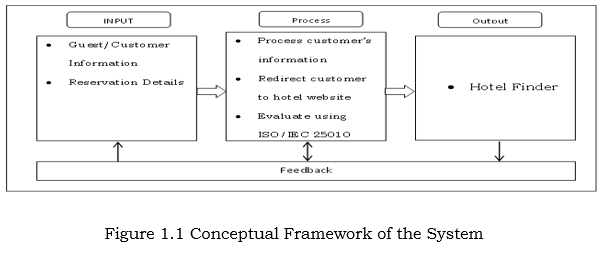
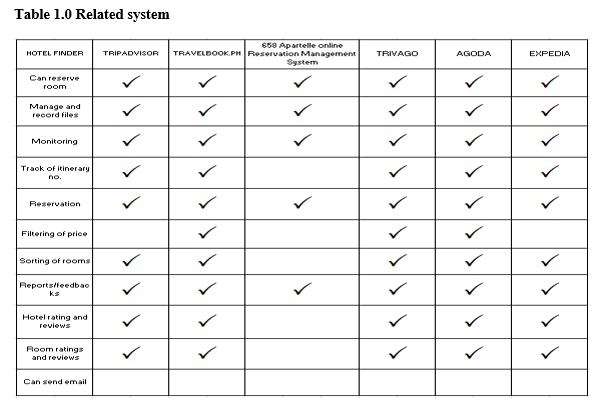
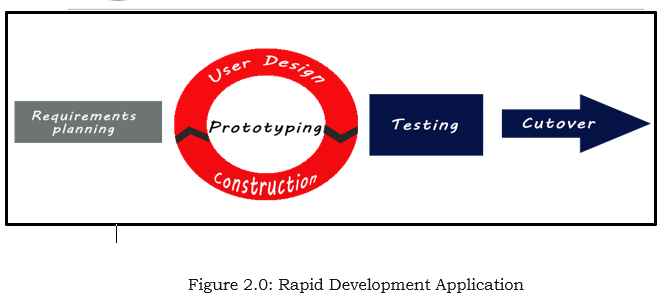
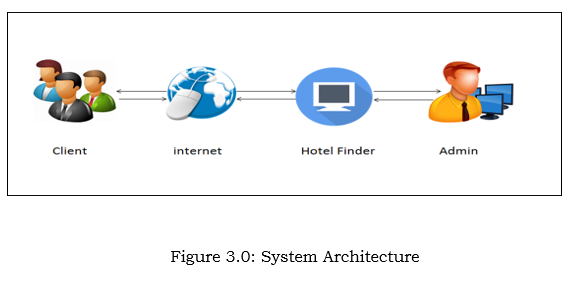

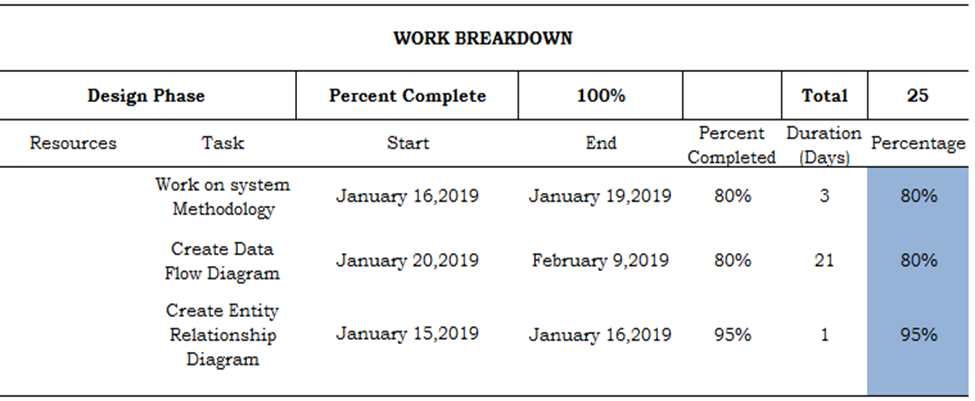
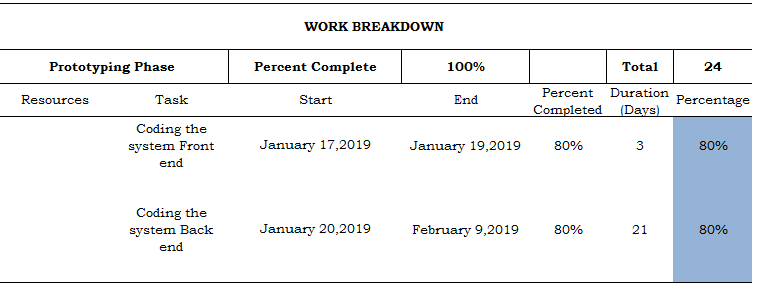
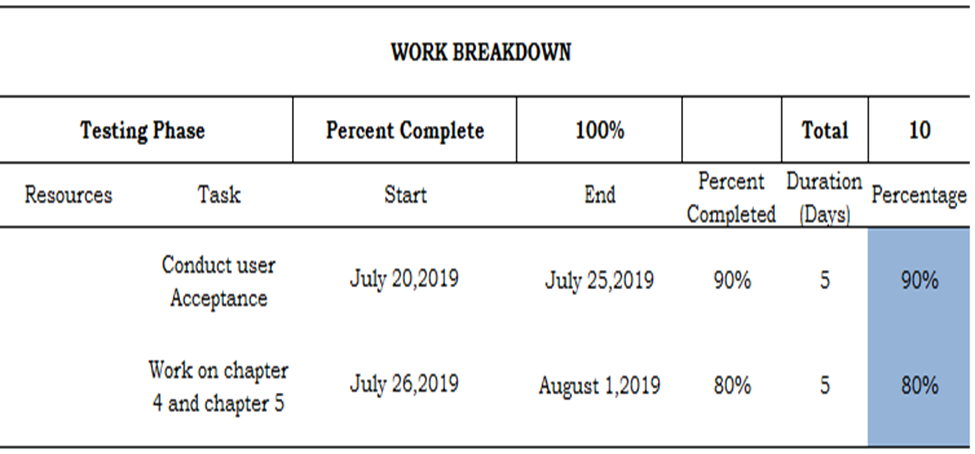

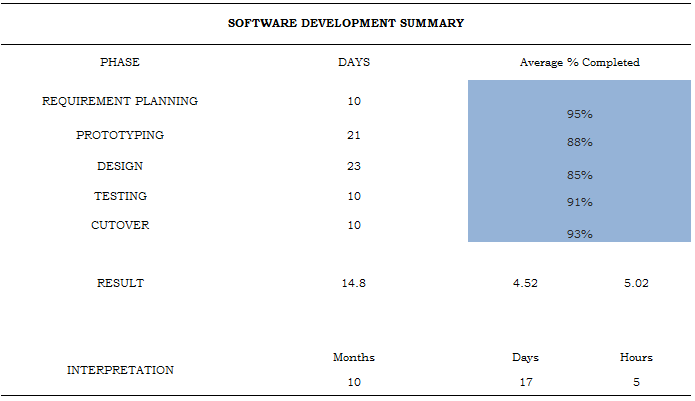
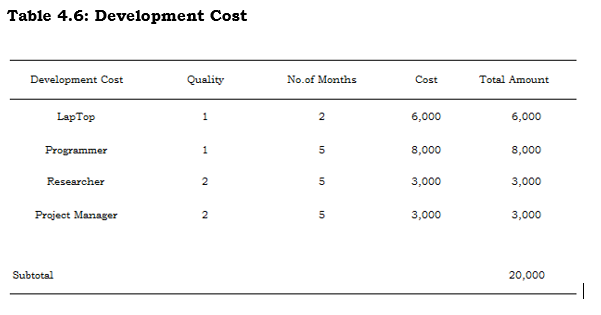
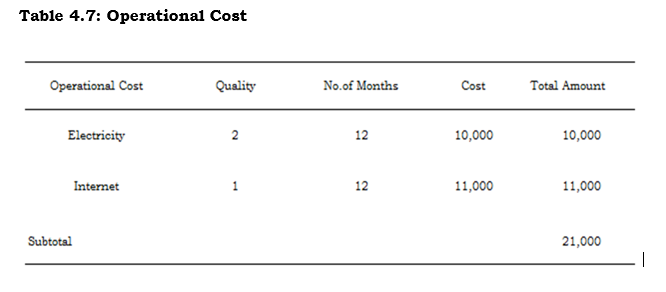


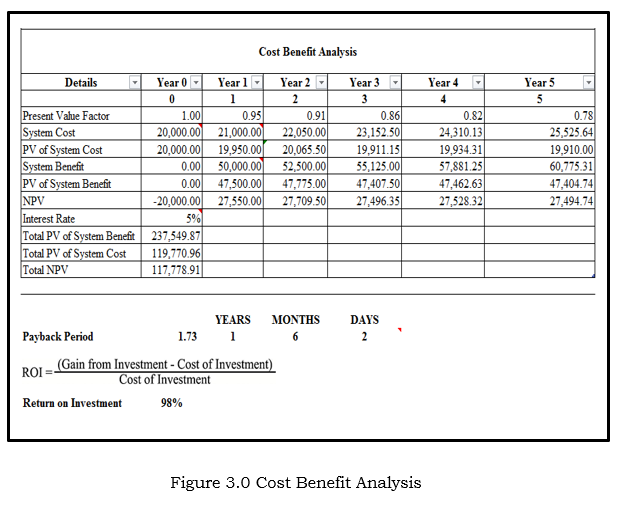

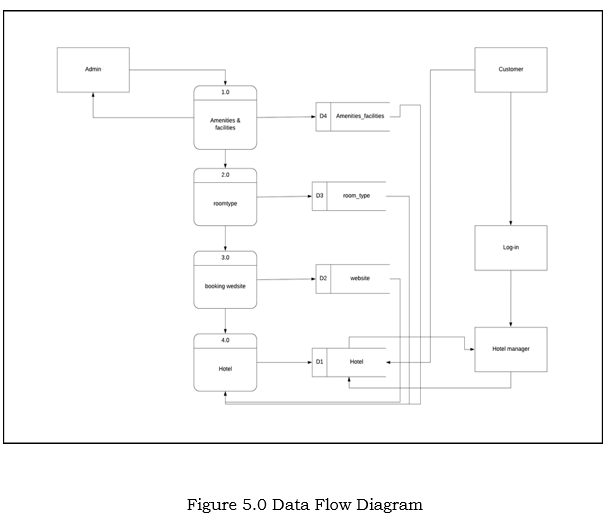
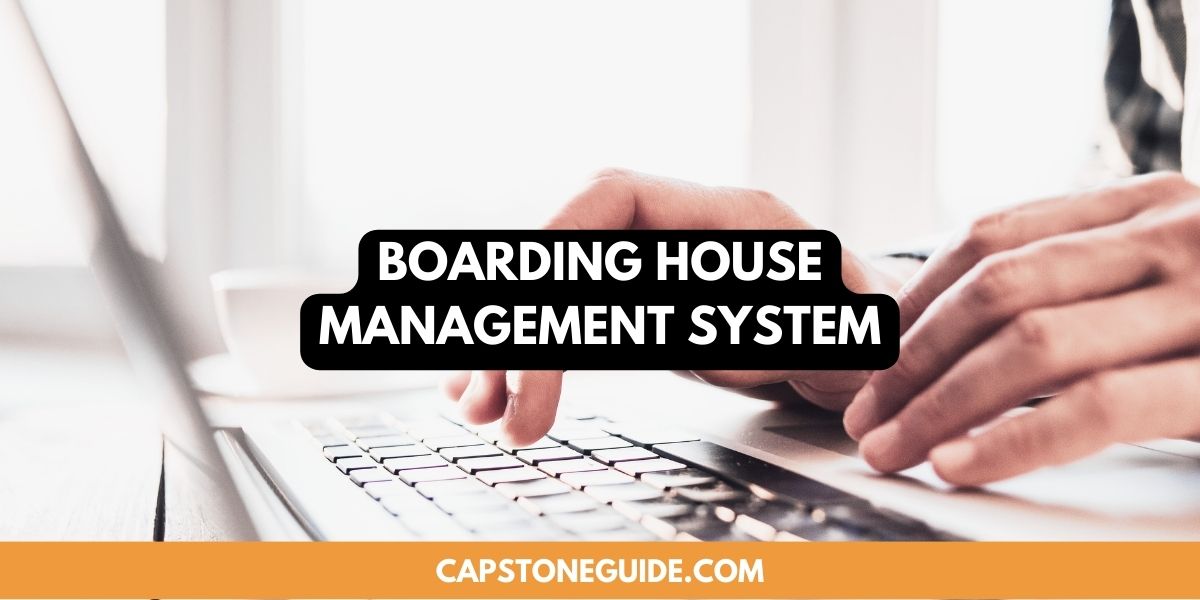


Leave A Comment
You must be logged in to post a comment.